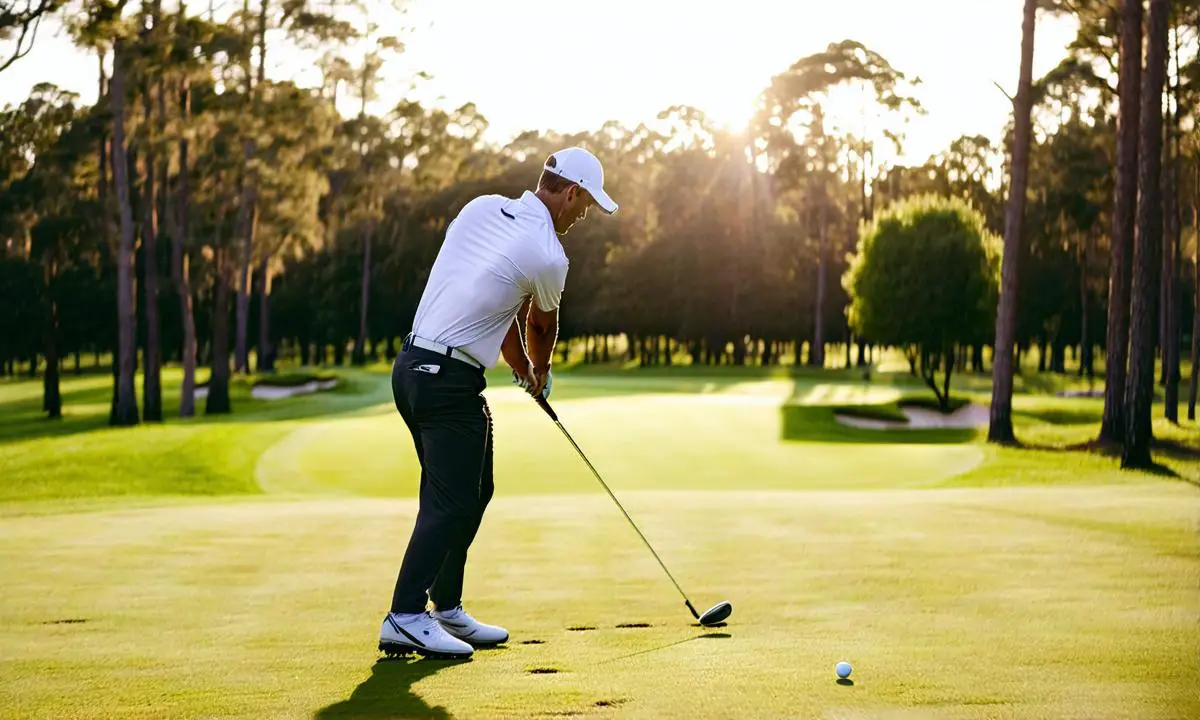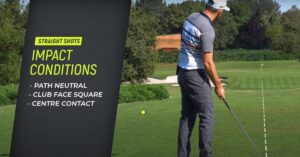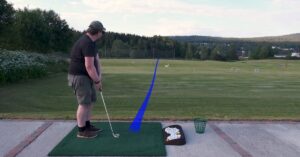What Is A Golf Draw? Master This Shot for Better Scores!
Golf can be a challenging game, and mastering different shot types is key to improvement. Among these shots, the golf draw stands out as a technique that can influence distance and direction on the course.
A golf draw refers to a shot that curves gently from right to left for a right-handed golfer. This controlled curve helps in achieving greater distance and accuracy compared to straight shots or slices.
The mechanics behind executing a perfect golf draw might surprise you. I will share tips that can enhance your game and help you hit this appealing shot with confidence.
What Is a Golf Draw and Why Is It Important for Every Golfer?
A golf draw is more than just a shot; it’s a game-changer. For many golfers, mastering this controlled curve can lead to improved performance on the course.
When hitting a golf draw, the ball starts straight before curving from right to left for right-handed players. This technique allows you to navigate around obstacles and position your ball better for upcoming shots.
Why does this matter? A well-executed draw creates distance due to its lower launch angle compared to straight shots. According to research conducted by the United States Golf Association (USGA), players who implement draws often experience longer distances because of their spin rate reductions.
“The ability to shape shots provides strategic options that can significantly impact scoring.” – Dr. John Sweeney, Sports Scientist
Every golfer should consider adding this skill into their arsenal. Imagine standing at the tee while assessing your next shot; if there are trees or hazards blocking your direct path, being able to play a draw gives you an advantage over competitors relying solely on straighter approaches.
The golf draw also plays beautifully on certain courses where doglegs require strategic shot placement. Instead of attempting risky straight shots that might result in trouble, using a draw ensures safe navigation while maintaining distance control.
This versatility establishes why understanding how to hit a successful golf draw is essential for all skill levels. Whether you’re playing casually with friends or competing in tournaments, knowing how to manipulate shot shapes proves invaluable.
Key Techniques to Mastering the Golf Draw Shot
The golf draw can transform your game, but mastering it requires practice and understanding. Below are key techniques that will help you shape this shot effectively.
1. Grip Adjustment for a Draw
Your grip is fundamental when executing a golf draw. A stronger grip means rotating your hands slightly clockwise on the club handle (for right-handed players). This subtle change promotes a closed clubface at impact, steering the ball from right to left.
2. Alignment Matters
Proper alignment sets up your entire shot. Position your feet aiming slightly right of the target while keeping your shoulders aligned with your feet rather than pointing directly toward the target line.
This misalignment encourages an inside-out swing path, which helps produce that desirable draw effect.
3. Swing Path Technique
The swing path plays a crucial role in hitting a golf draw. Focus on an inside-to-outside approach during your swing motion by starting low and swinging out toward the target’s left side for right-handed players.
Aiming this way creates room for the ball to curve naturally without excessive force or manipulation.
4. Club Selection and Ball Position
Your choice of club impacts how far and high you’ll hit the ball as well as its spin rate. Selecting clubs like woods or hybrids often maximizes distance advantageously, creating effective draws across various distances.
As for ball position, placing it slightly back in your stance enables better control over trajectory and direction while promoting cleaner contact with minimal spin rates for optimal performance.
- Tee Height: Keep tees lower if you’re using drivers; they promote lower launches ideal for drawing shots.
- Shaft Flexibility: Stiffer shafts enhance accuracy under higher speeds conducive to achieving controlled draws efficiently.
5. Practice Drills to Reinforce Learning
No technique flourishes without repetition! Incorporating specific drills into practice sessions reinforces these skills further:
- The String Drill: Place two alignment sticks parallel to each other, about two feet apart where you’d stand during play.
Hit balls through this tunnel focusing on maintaining inner paths leading towards desired curves! - Nets with Targets: Use nets set up at different angles requiring precise aim correction utilizing draw techniques learned previously within controlled environments before hitting actual courses!
- Pacing Drill: Count “one” upon taking back swings followed by counting “two” upon transitioning downwards immediately after – feel momentum shift yielding favorable energy transfers required delivering powerful impactful strikes consistently!
“To master any skill, one must practice relentlessly.” – Tiger Woods
How to Use Golf Draws Strategically in Different Course Conditions?

Utilizing a golf draw effectively involves understanding various course conditions. Whether facing obstacles or navigating tricky doglegs, knowing when and how to apply this shot can greatly impact your play.
Imagine standing on the tee with a tight fairway ahead, flanked by trees on the left. Hitting a golf draw allows you to start the ball right of your target line before curving it back toward the center. This technique provides extra distance while avoiding hazards.
The Impact of Wind Conditions
Wind plays an important role in shot selection. For example, if you’re playing into a headwind, hitting a draw achieves lower launch and reduces spin, helping maintain control against gusts.
- Downwind Advantage: Conversely, using a draw downwind promotes more distance as the ball rolls further upon landing.
- Crosswinds: When dealing with crosswinds from right to left for right-handed players, ensuring your draw is precise helps counteract any drift caused by wind forces.
Tackling Dogleg Holes
Certain courses feature dogleg holes that demand strategic shot placement. Many amateurs struggle with these layouts because they try aiming directly at their targets.
A well-executed draw allows you to navigate around corners smoothly. Aim towards the outside of the curve; then let your swing naturally pull back into play. By planning your shots accordingly based on angle and tree position, you set yourself up for better opportunities at each hole.
“Strategic shot-making often translates into lower scores.” – Mark Broadie, Author of “Every Shot Counts”
The Role of Terrain Features
Selecting draws becomes essential when contending with elevation changes or uneven lies. For uphill shots where stability matters most due to limited visibility towards flags; executing draws improves potential accuracy.
- Bumpiness in Fairways: Navigating bumpy terrains calls for adjusting stance slightly forward while relying on controlled draws that help maintain consistent flight paths over irregular surfaces!
- Slope Considerations: On sloped terrains (e.g., downhill), applying a slight grip change combined with inside-out swings not only promotes smoother acceleration but encourages graceful arcs resulting from ideal contact points!
Packing Your Strategy Together
A successful strategy incorporates understanding surrounding features along with personal strengths when implementing golf draws consistently throughout gameplay sessions! Tracking improvements will inform future decisions during practice rounds too!
| Condition Type | Recommended Action |
|---|---|
| Strong Headwind | Aim low and use a draw for control. |
| Crosswinds Right-to-Left | Adjust aim rightward allowing curves offsetting wind influence! |
FAQs
How can a golf draw improve my game?
A golf draw can enhance your performance by allowing greater control over ball direction and distance. This technique helps you navigate around obstacles, setting up better positions for subsequent shots on the course.
What grip adjustments help create a draw?
To achieve a successful golf draw, adjust your grip to be slightly stronger. Rotate your hands clockwise on the club, which promotes a closed clubface at impact, encouraging that desired right-to-left curve.
Can wind impact how I play draws?
Absolutely! Wind affects shot selection; using a draw in headwinds produces lower launches and reduces spin rate, enhancing control. Adjusting your aim based on wind direction maximizes the effectiveness of this shot shape.






